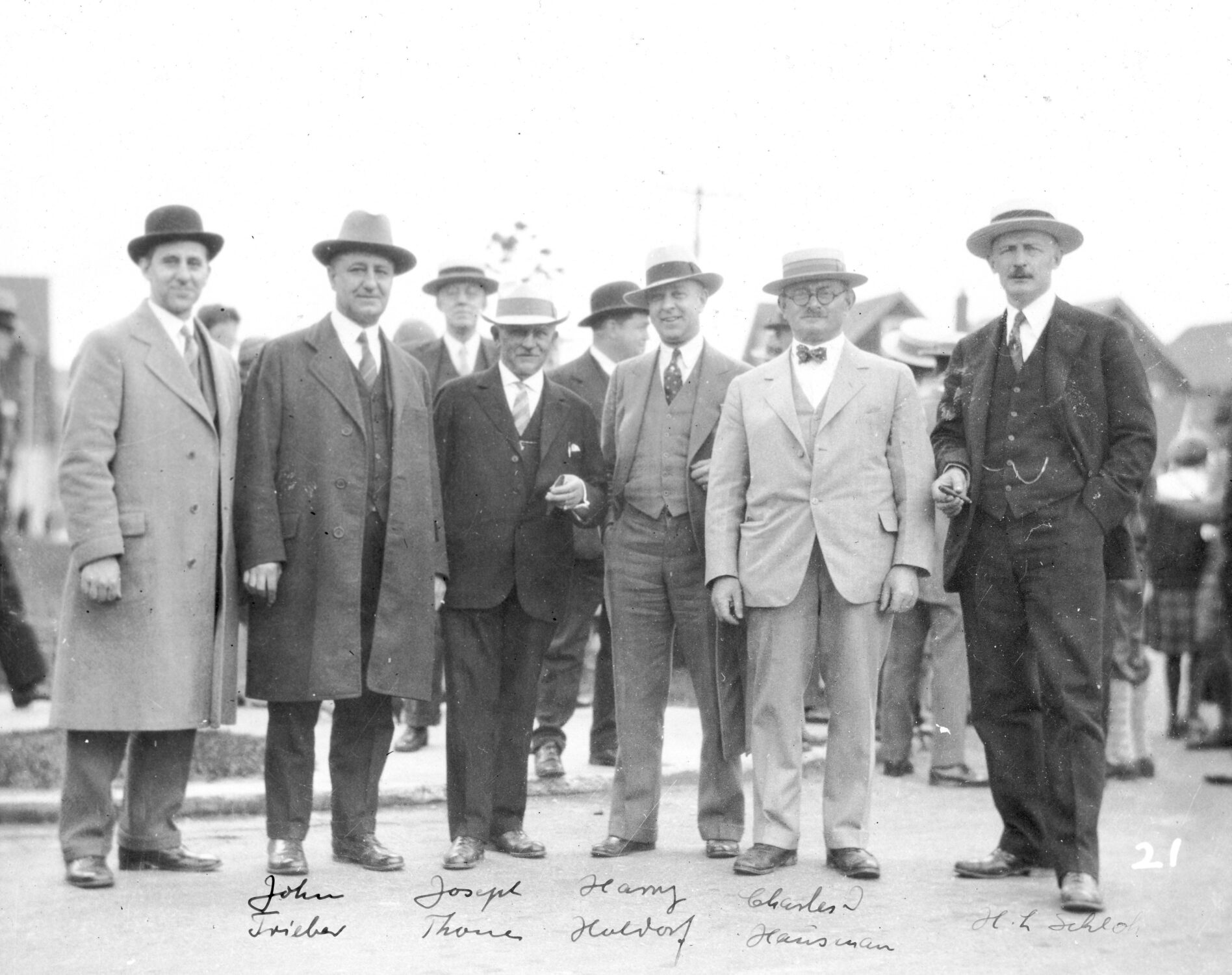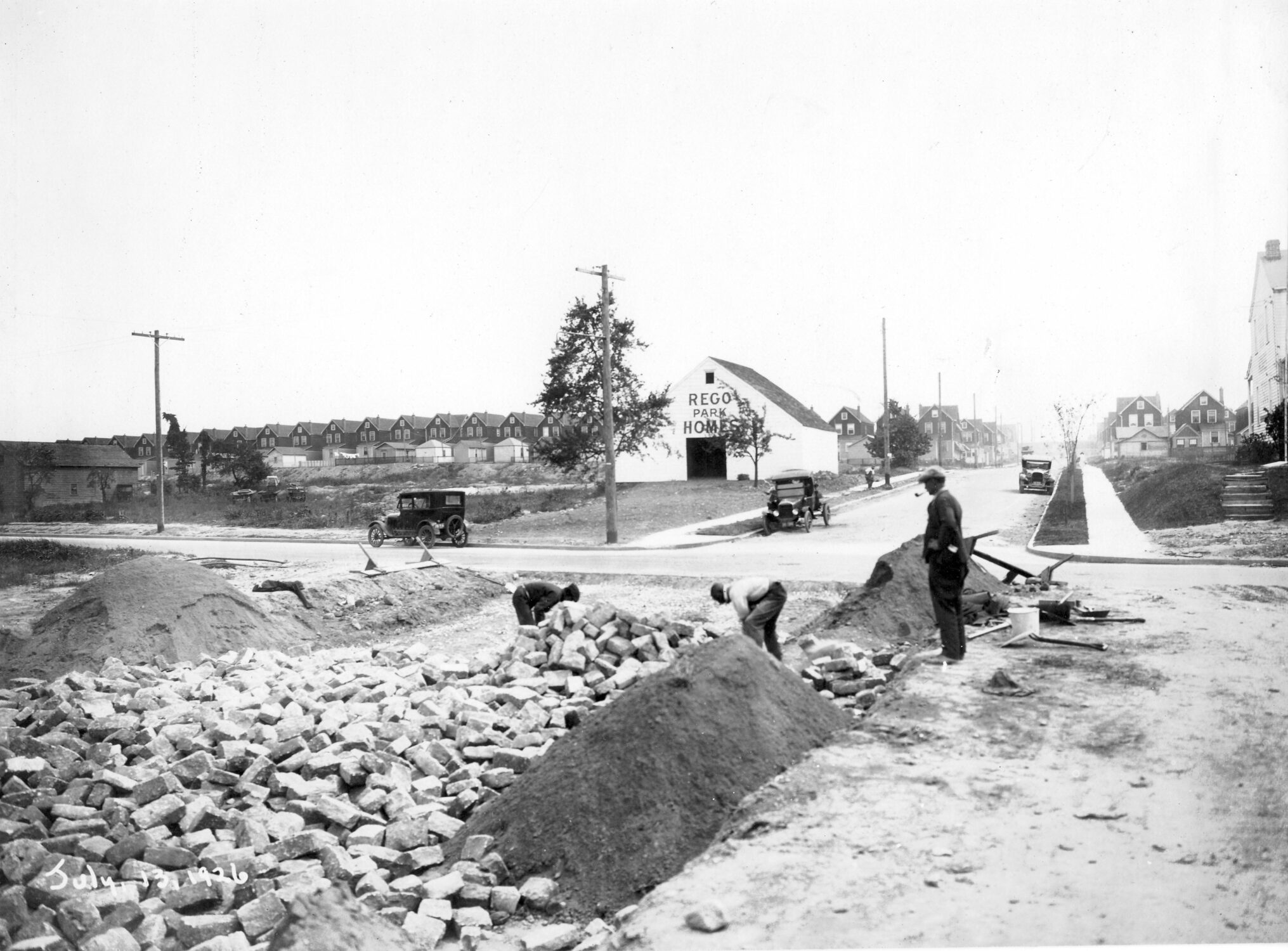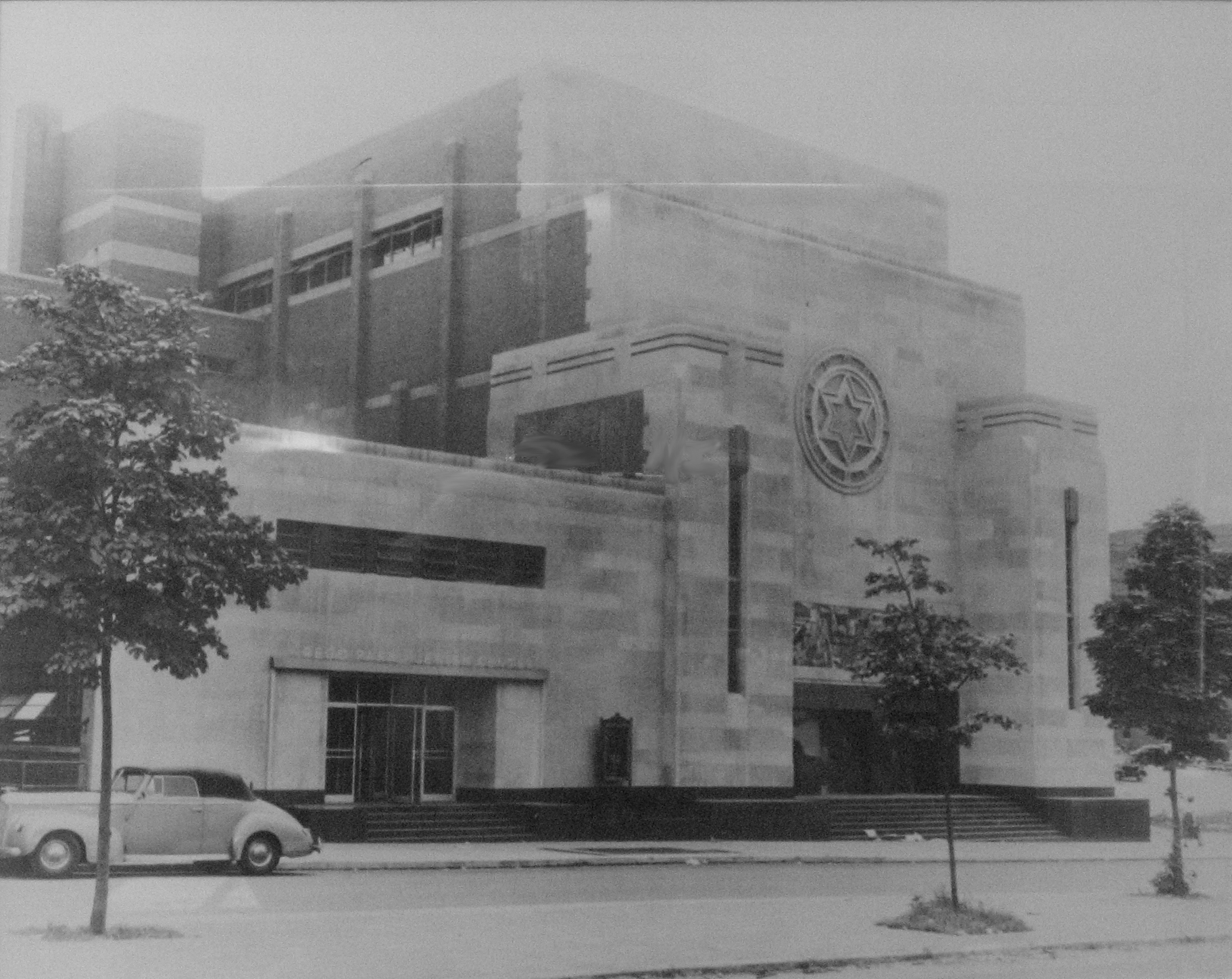Rego Park: A Real Good Community Turns 90 & Looks Ahead
Views: 377

Rego Park is a “REal GOod” community to live in, and residents and history aficionados now have more reasons to learn why. 2013 marks the 90th anniversary of “Rego Park.” In 1923, the Rego Construction Company, Inc. also known as the Real Good Construction Company acquired land in Forest Hills West, and named Rego Park after their advertising slogan, “REal GOod Homes.” Their goal was to develop and market the area. On October 14, 1923, the New York Times announced that Rego Construction Co. was chartered for $75,000. The firm consisted of President Henry L. Schloh and Secretary and Treasurer Charles I. Hausmann; both of whom emigrated from Germany.
Schloh and Hausmann came upon farmland which was settled in the 17th century by Dutch and English farmers, which was followed by German and then Chinese farmers who sold produce to Chinatown. The sole road was Remsen’s Lane (now 63rd Drive), which was named after the Remsen family who owned the Remsen family farm.
On March 25, 1925, the New York Times published, “Work will be started at once on the houses to be erected on the lots off Queens Boulevard, while the property fronting this 200-foot highway will be developed with modern, high-class apartment houses as soon as the parking and paving are completed.” From a Bank of Manhattan Company loan, Rego Construction Company began developing 525 8-room one-family Colonial frame houses between 63rd Drive and Elliot Avenue, which sold for about $7,500. Prospective buyers would call NEWtown 6432.
To complement the houses, the firm developed three apartment houses, which 70 families each called home. They were the Tudor-style Remo Hall at 61-40 Saunders Street (1927), followed by the Spanish Mission-style Jupiter Court at 62-64 Saunders Street (1927), and the Spanish Mission-style Marion Court at 62-98 Saunders Street (1929). These significant buildings by Architect Benjamin Braunstein survive mostly intact, and offer recessed facades enabling courtyards and maximum air and light. Architecturally, Marion Court boasts terra-cotta features depicting animals, leaded glass depictions of castles, and a roof garden where residents would recreate and keep cool come summer. For 2 – 4 rooms at Remo Hall and Jupiter Court, rentals cost $46 and up.

Schloh’s grandson, Bruce Powell, explained, “When the Depression hit, my grandfather refused to go bankrupt, so a lot of the money invested in his developments came from family and friends. According to my mother, he didn’t buy a new suit for 10 years, since he tried to keep everything afloat.”
The children of Rego Park had their first public school, PS 139 in 1929. Then on March 9, 1930, Schloh told the Times, “With the completion of the Queens Boulevard subway now under construction, that section must continue to gain in valuation and in development.” That came true, as other firms developed buildings along Saunders Street and Queens Boulevard, such as the Saunders Gardens complex featuring a private park, and the Oxford-Cambridge group. A model of urban planning south of the Long Island Railroad is the early 1930s Rego Park Crescents, named after alphabetical concentric semicircular roads. Tudor rowhouses were built by Rodman & English, and freestanding homes are also found.
The 1939 World’s Fair in Flushing Meadows added to the need for residential development, such as the English-style Queens Blvd Gardens apartment complex, where 4 out of 6 acres offer lush gardens. Commerce increased too, most notably with Art Deco limestone-appointed shops lining 63rd Drive, which once housed Woolworth and McCrory’s. Queens Boulevard shops included Bartons, Hamburger Train, Evelyn’s Bake Shop, Scott’s Seafood, and the longtime survivor Ben’s Best Delicatessen.“My favorite memory was when all the kids in the neighborhood would go to Howard Johnson’s (1940) for their birthday parties and get a free little white frosted cake,” stated Jackie Kilberg of Rego Park, who fondly recalled the long-demolished Colonial mansion on Queens Boulevard, which was deemed the “Largest Roadside Restaurant In The World.” Nearby, Boulevard Tavern hosted receptions, Big Bands, and singer Patti Page, and Fairyland offered amusements for children.

In 1939, the WPA funded the recreational center, Lost Battalion Hall, which honored the 77th Division of the U.S. Army for its WWI heroism, and offered a firing range and drill hall for the Queens Veterans of Foreign Wars and the American Legion. After the 1939 World’s Fair, some major Mid-Century Modern planned developments followed with Walden Terrace (1949) and Park City (1955), as well as Alexander’s department store (1959).
Due to Rego Park’s architecture, urban planning, social spaces, and accessibility, even celebrities called it home. Some were Composer Burt Bacharach, Actor Eddie Bracken, Comic Actor Sid Caesar, Actress June Havoc, Dancer Gypsy Rose Lee, 1945 Miss America Winner Bess Myerson, TV Comedian Marty Ingels, and TV Producer Fred Silverman.
Upon learning about Rego Park’s 90th, locals spoke. Longtime resident and member Ruth Loewenstein of Rego Park Jewish Center (1948) explained, “We have been a beacon for more than 7 decades as the largest spiritual, cultural, and recreational center, and a lifeline for the Jewish community and other denominations. We congratulate Rego Park on its 90th anniversary.” The Bauhaus-style synagogue earned State & National Register of Historic Places status in 2009.
Ruth Mueller is a congregant of Our Savior Lutheran Church (1931), a charming wooden church on 63rd Drive. Mueller was born in 1922, and witnessed Rego Park’s rural to urban transformation. She lived in a frame house at 97-51 63rd Road, which had to be elevated to make the land level. She stated, “My life has been a very full life, and I am thankful I can remember all the history.” Mueller reminisced, “I would see movies at the (1939 World’s Fair-inspired) Trylon Theater and the Drake Theatre (1935), go on a date with my husband and have butter crunch and pistachio ice cream at Winther’s Confectionery on Woodhaven Boulevard, swing on Weeping Willow trees, and walk 5 minutes to the new subway.”
Pastor Matthew Popovits, a 6-month Rego Park resident, explained, “We’re a long-standing member, and we want to not only be a part of Rego Park history, but more and more a part of its heart and soul, and show simple acts of love and kindness to our neighbors. We have the world at our fingertips, since the world is in Rego Park, with its ethnic diversity, constant activity, and accessibility.”
Today, Rego Park’s commerce continues to boom with the 2010 development of Rego Center featuring Century 21, Costco, and Dallas BBQ. Despite growth, it is important to preserve Rego Park’s vast concentration of historic architecture which grants a distinctive identity.
Dadras Architects, a firm led by partners Robert Dadras and Victor Dadras, participated in a Rego Park walking tour in 2012. They are the founders of the Downtown Revitalization Group, a collaborative which specializes in historic preservation, urban design, and adaptive re-use. They discovered a unique and rare Art Deco presence along 63rd Drive. “With façade restoration work, the business district could be brought back to life, so its historic architecture will be fully appreciated,” they stated. After touring residential Saunders Street, they commented, “This is reminiscent of a European approach to urban living in a Garden Community, and an excellent prototype of a design for New York City’s future.” Looking ahead, they stated, “The 90th anniversary is a wonderful milestone, and it is our belief the Rego Park community should take this opportunity to preserve and celebrate their history as a vital part of their revitalization effort.”


